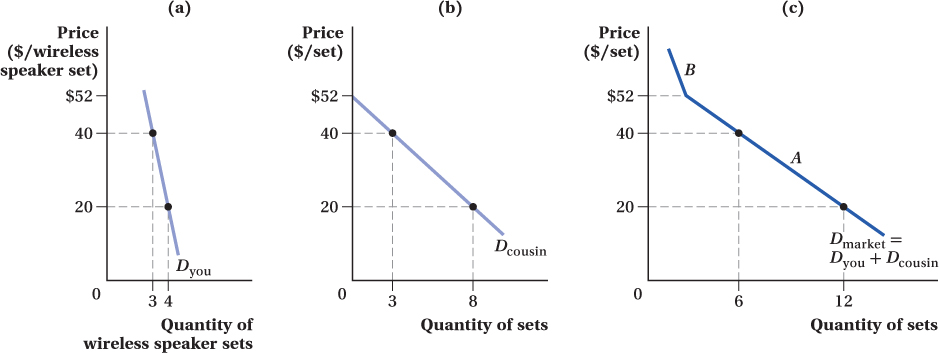
Figure 5.19 Market Demand Curve
(a) Your market demand curve Dyou shows the number of sets of wireless speakers you would demand at each price. At a price of $40 per set, you demand 3 sets; at $20 per set, you demand 4 sets.(b) Your cousin’s market demand curve Dcousin shows that he is more sensitive to price changes in speakers than you are. At a price of $40 per set, he similarly demands 3 sets, but when the price of a set of speakers is $20, he demands 8 sets.(c) In a market consisting only of you and your cousin, the total market demand curve Dmarket is the sum of your demand curve Dyou and your cousin’s demand curve Dcousin. At a price of $40 per set of speakers, you and your cousin each demand 3 sets, summing to 6 sets on Dmarket. When speaker sets cost $20 each, you demand 4 sets and your cousin demands 8, summing to 12 sets of speakers on Dmarket. At prices above $52, your cousin’s quantity demanded is zero, so Dmarket overlaps with Dyou, and therefore Dmarket is kinked at a price of $52. Market demand will always be flatter and will never be to the left of the individual demand curves.